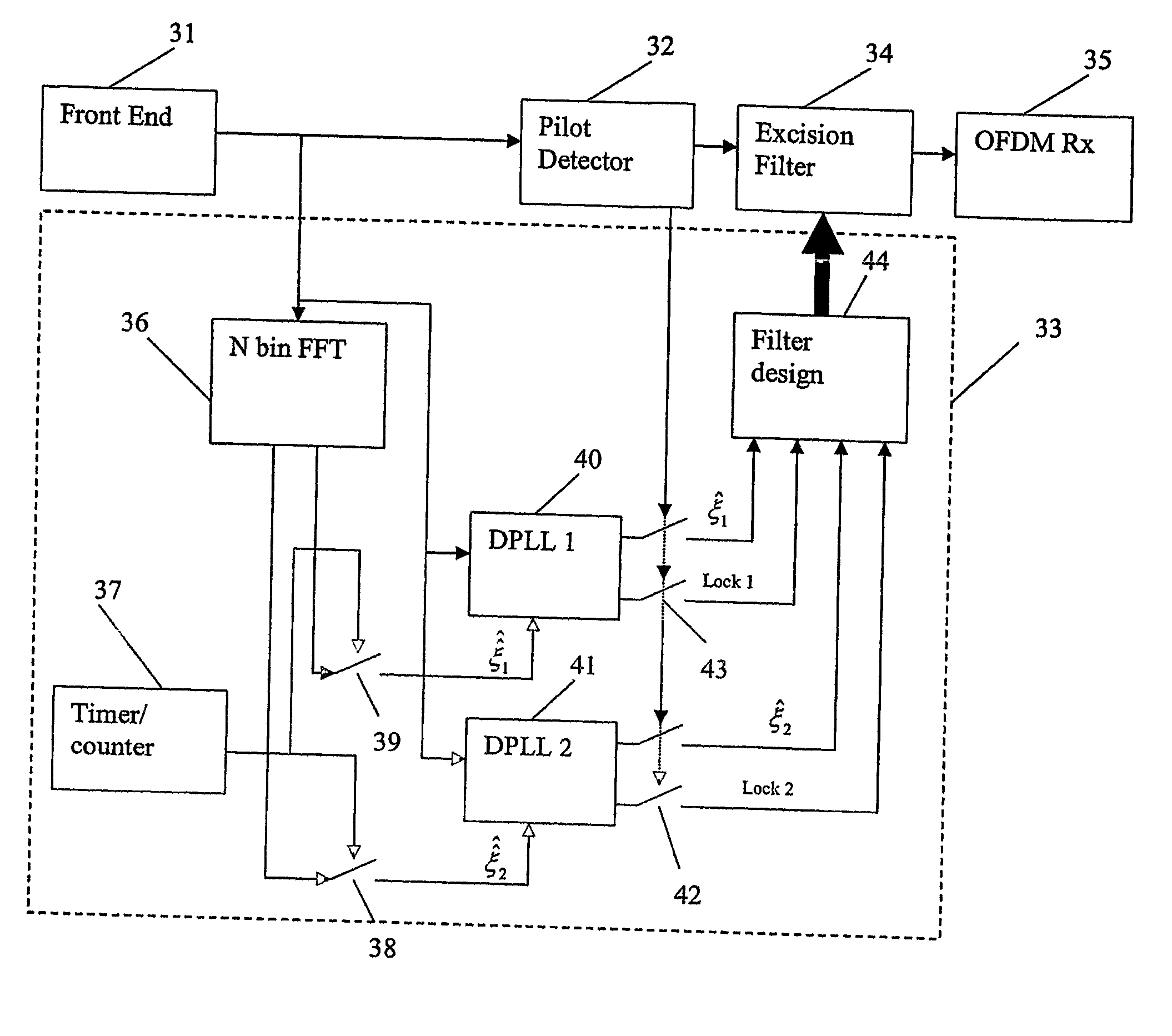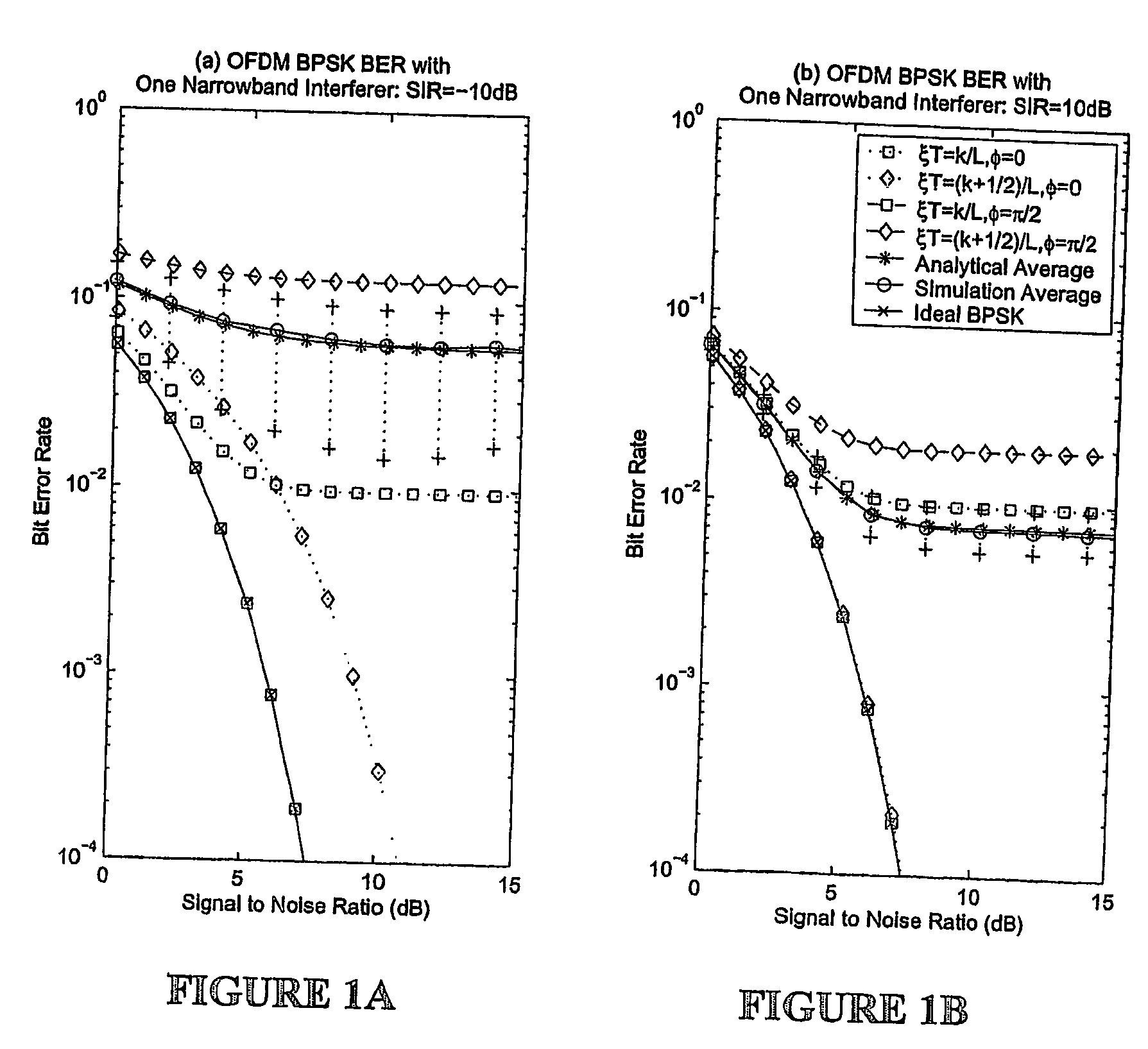Narrowband interference suppression for ofdm system
a technology of communications system and narrowband interference, which is applied in the field of narrowband interference suppression systems for ofdm communications system, can solve the problems of narrowband interference in wlan and wman systems, radio non-idealities, and narrowband interferen
- Summary
- Abstract
- Description
- Claims
- Application Information
AI Technical Summary
Benefits of technology
Problems solved by technology
Method used
Image
Examples
Embodiment Construction
[0053] A common model for a received, baseband (low pass equivalent) OFDM symbol, sampled with period T, is
rn=c(τ;nT){circle around (×)}s(nT−τs)e−j[2πv(nT−rs)+θ]+η(nT) (1)
where c(τ;nT) is a doubly dispersive, low pass equivalent, fading channel which introduces time-dispersion in dimension τ, s(t) is the transmitted signal, n is the sample index, τs, v and θ are, respectively, the time-, frequency- and phase-offsets between transmitter and receiver introduced by a combination of system non-idealities and channel linear distortions, and η is complex additive white Gaussian noise (AWGN) having variance σw2 and {circle around (×)} is the convolution operator. Addition to N narrowband interferes to the received signal producesrn=c(τ;n T)⊗s(n T-τs)ⅇ-j[2π v(nT-τs)+θ]+c(τ;n T)⊗∑i=1Nbiⅇ-j[2πξinT+ϕi]+η(n T)(2)
where bi, ξi and φi are, respectively, the amplitude, frequency and phase of the ith of N demodulated narrowband interferer.
[0054] This simple interference...
PUM
 Login to View More
Login to View More Abstract
Description
Claims
Application Information
 Login to View More
Login to View More - R&D
- Intellectual Property
- Life Sciences
- Materials
- Tech Scout
- Unparalleled Data Quality
- Higher Quality Content
- 60% Fewer Hallucinations
Browse by: Latest US Patents, China's latest patents, Technical Efficacy Thesaurus, Application Domain, Technology Topic, Popular Technical Reports.
© 2025 PatSnap. All rights reserved.Legal|Privacy policy|Modern Slavery Act Transparency Statement|Sitemap|About US| Contact US: help@patsnap.com



